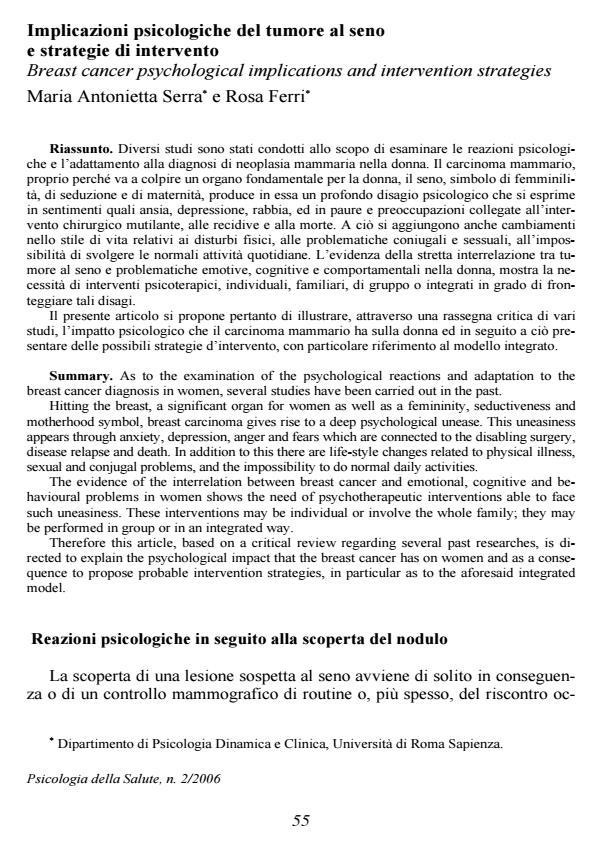Implicazioni psicologiche del tumore al seno e strategie di intervento
Journal title PSICOLOGIA DELLA SALUTE
Author/s Maria Antonietta Serra, Rosa Ferri
Publishing Year 2007 Issue 2006/2 Language Italian
Pages 15 P. 55-69 File size 270 KB
DOI
DOI is like a bar code for intellectual property: to have more infomation
click here
Below, you can see the article first page
If you want to buy this article in PDF format, you can do it, following the instructions to buy download credits

FrancoAngeli is member of Publishers International Linking Association, Inc (PILA), a not-for-profit association which run the CrossRef service enabling links to and from online scholarly content.
As to the examination of the psychological reactions and adaptation to the breast cancer diagnosis in women, several studies have been carried out in the past. Hitting the breast, a significant organ for women as well as a femininity, seductiveness and motherhood symbol, breast carcinoma gives rise to a deep psychological unease. This uneasiness appears through anxiety, depression, anger and fears which are connected to the disabling surgery, disease relapse and death. In addition to this there are life-style changes related to physical illness, sexual and conjugal problems, and the impossibility to do normal daily activities. The evidence of the interrelation between breast cancer and emotional, cognitive and behavioural problems in women shows the need of psychotherapeutic interventions able to face such uneasiness. These interventions may be individual or involve the whole family; they may be performed in group or in an integrated way. Therefore this article, based on a critical review regarding several past researches, is directed to explain the psychological impact that the breast cancer has on women and as a consequence to propose probable intervention strategies, in particular as to the aforesaid integrated model.
Maria Antonietta Serra, Rosa Ferri, Implicazioni psicologiche del tumore al seno e strategie di intervento in "PSICOLOGIA DELLA SALUTE" 2/2006, pp 55-69, DOI: